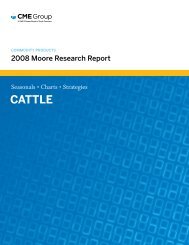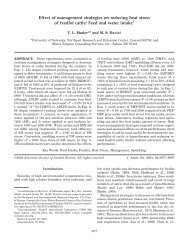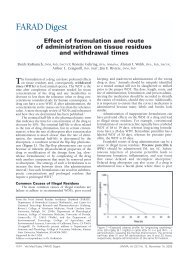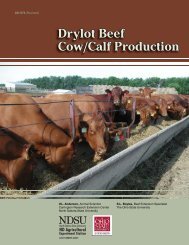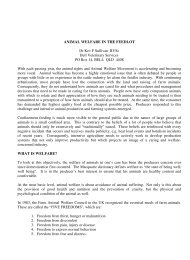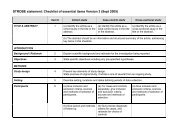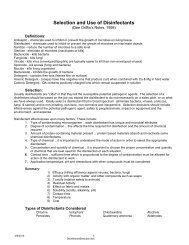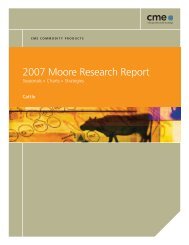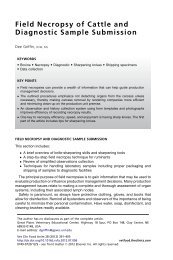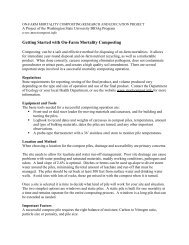CRIMES WITHOUT CONSEQUENCES - gpvec
CRIMES WITHOUT CONSEQUENCES - gpvec
CRIMES WITHOUT CONSEQUENCES - gpvec
Create successful ePaper yourself
Turn your PDF publications into a flip-book with our unique Google optimized e-Paper software.
ConClusion<br />
speeds, c) requiring emergency stops on the bleed rail, d) requiring a portable<br />
stunning device, and backup, for use in ante-mortem areas, e) requiring a backup<br />
stunning device in the stunning area and at the bleeding station on the slaughter<br />
line, f) requiring testing of all stunning devices, including backups, at the beginning<br />
of each shift and regular stunner preventive maintenance and cleaning, and g)<br />
requiring formal worker training in humane handling and slaughter.<br />
11.2 Federal Enforcement in U.S. Plants<br />
•<br />
•<br />
Finding #4:<br />
The USDA issued approximately 500 humane handling/slaughter NRs for all federal<br />
inspected slaughterhouses during an 18-month period. This represents no increase<br />
in the number of deficiencies cited for humane handling/slaughter since the mid-<br />
1990s. (This suggests that either no increase in enforcement has occurred or that<br />
industry compliance with regulations and federal enforcement of the regulations<br />
increased proportionally during the time period, which seems unlikely.) The number<br />
of slaughter plants suspended for humane violations over the past 10 years has<br />
increased, however, overall, less than 1 percent of all food safety NRs—and less<br />
than 10 percent of all food safety suspensions—are issued for humane handling and<br />
slaughter violations.<br />
Recommendation:<br />
The USDA should consistently cite all incidents of noncompliance with federal<br />
humane handling and slaughter regulations and take all appropriate associated<br />
regulatory actions, such as the suspension of plant operations, until the problem<br />
is resolved. USDA personnel who repeatedly fail to cite noncompliance should be<br />
subject to discipline, including termination.<br />
Finding #5:<br />
District veterinary specialists in humane slaughter have improved oversight of<br />
humane activities in federal plants, as evidenced by the number of NRs referencing<br />
the involvement of the district vet. However, these specialists visit individual<br />
slaughter plants only rarely, suggesting that most humane violations go either<br />
unobserved or unreported.<br />
Recommendation:<br />
The USDA should permanently station inspection personnel in the stunning<br />
area of all federal slaughter plants classified as “large.” Their sole responsibility<br />
should be ensuring enforcement of the Humane Slaughter Act. In addition, the<br />
USDA should require that inspection personnel in all “small” and “very small”<br />
plants observe the stunning process at least two times each shift to assess worker<br />
competence and proper equipment function. Inspection in the anti-mortem areas<br />
of all plants should increase significantly to ensure that animal handling is being<br />
conducted in a humane manner.<br />
95




